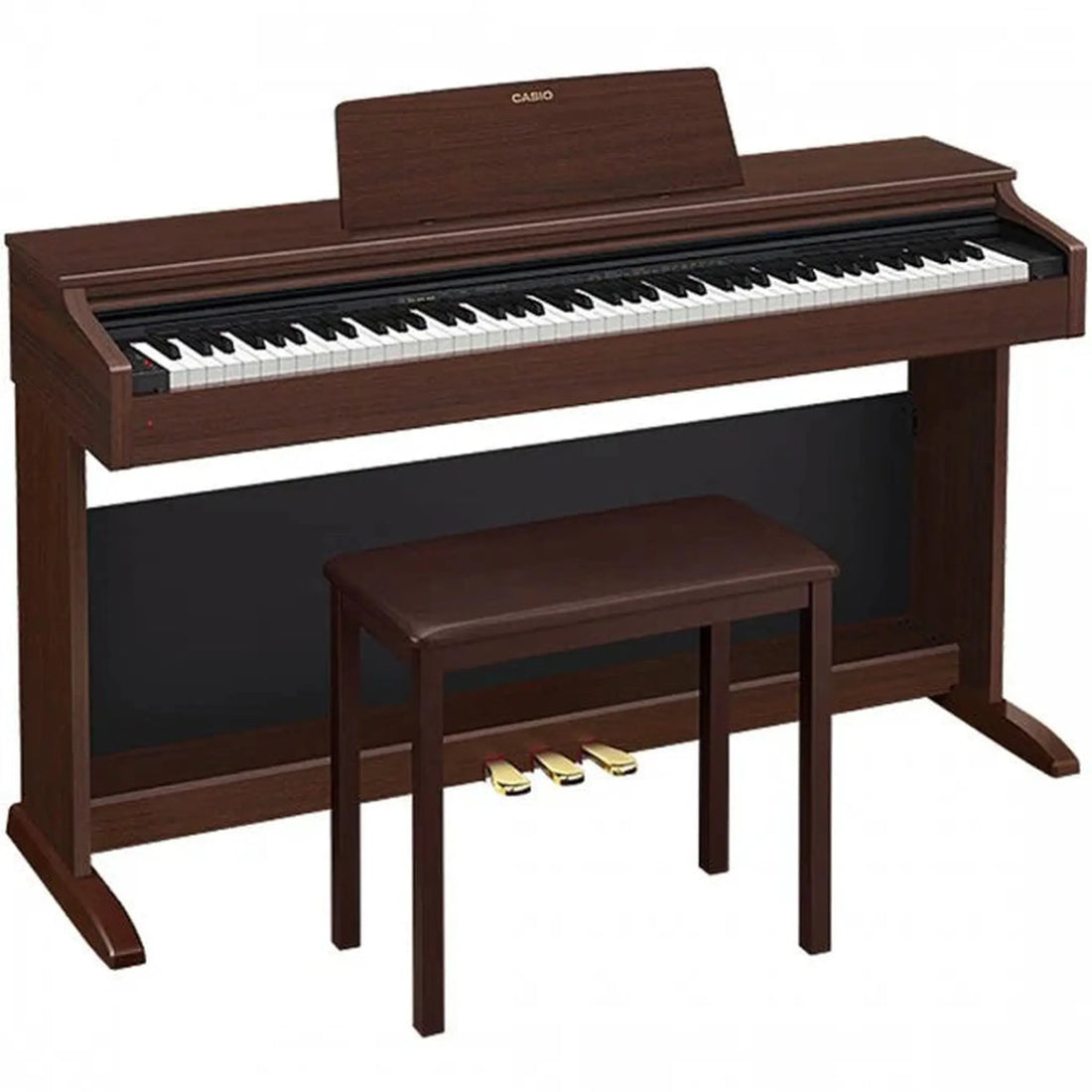Casio has established itself as a significant player in the digital piano market, offering a wide range of instruments catering to musicians of all levels. This guide, from Joondalup Music Centre in Perth, provides a comprehensive overview of Casio digital pianos, addressing crucial considerations for beginners, intermediate players, and professionals. We will delve into construction materials, popular models, sound quality nuances, maintenance protocols, and cost implications, offering a thorough understanding of these versatile instruments.
Construction Materials and Key Action: The Foundation of Playability
The construction of a digital piano focuses on replicating the feel and response of an acoustic piano.
Key Action:
- Weighted Key Action: This is a fundamental feature, where the keys are weighted to simulate the hammer mechanism of an acoustic piano. This provides the resistance and feel necessary for developing proper playing technique.
- Graded Hammer Action: This is a more advanced weighted key action, where the lower keys are heavier to the touch, and the higher keys are lighter, mirroring the feel of an acoustic piano. This action is crucial for nuanced playing and dynamic control.
Cabinet Construction:
- Digital pianos come in various cabinet styles, from portable models for practice to furniture-style cabinets designed for home use.
- Cabinet materials range from MDF (Medium Density Fibreboard) to more solid wood constructions, influencing the instrument's aesthetics and stability.
Sound Engine:
- The sound engine is the digital heart of the piano, responsible for generating the piano sound. Casio uses various sound engines, with more advanced engines offering higher-quality samples and greater expressiveness.
Speakers:
- The built-in speakers play a crucial role in the overall sound. The size, quality, and placement of the speakers influence the piano's volume, clarity, and tonal projection.
Popular Casio Digital Piano Models for All Levels
Casio offers a diverse range of digital pianos to suit different needs and skill levels.
Beginner Pianos:
- Casio's CDP and CTK series are popular choices for beginners, offering affordable instruments with weighted key action and essential features for learning. These models provide a good introduction to piano playing without a significant financial investment.
Intermediate Pianos:
- The Casio Privia PX series is well-regarded for its compact design, realistic key action, and improved sound quality. These pianos are suitable for intermediate players who require a more expressive instrument for practice and performance.
Professional Pianos:
- The Casio Celviano Grand Hybrid series represents Casio's flagship line, offering a hybrid key action that incorporates real wooden keys and a mechanism that closely replicates the feel of an acoustic grand piano. These pianos also feature advanced sound engines and speaker systems, delivering a rich and nuanced piano sound suitable for professional musicians.
Sound Quality: Capturing the Nuances of an Acoustic Piano
The sound quality of a digital piano is a crucial factor, particularly for experienced players.
Sound Sampling:
- Digital pianos use samples of acoustic pianos to generate sound. Higher-quality samples, recorded from renowned grand pianos, contribute to a more realistic and expressive sound.
Polyphony:
- Polyphony refers to the number of notes that can be played simultaneously. Higher polyphony is essential for complex musical passages and sustained chords.
Touch Sensitivity:
- Touch sensitivity allows the piano to respond to the player's touch, producing a range of dynamics from soft to loud. More advanced pianos offer greater touch sensitivity and dynamic control.
Sound Effects:
- Many digital pianos include effects such as reverb and chorus, which can enhance the sound and create different acoustic environments.
Maintenance Protocols for Digital Piano Longevity
Digital pianos require less maintenance than acoustic pianos, but some basic care is essential.
Regular Cleaning:
- Wipe down the keys and cabinet with a soft, dry cloth to remove dust and fingerprints.
Dust Prevention:
- Keep the piano covered when not in use to prevent dust accumulation.
Avoid Extreme Temperatures:
- Avoid placing the piano in direct sunlight or near heat sources, as extreme temperatures can damage the electronics.
Professional Servicing:
- While digital pianos generally don't require tuning, occasional servicing by a qualified technician may be necessary to address any electronic or mechanical issues.
Cost Considerations for Digital Pianos Across Skill Levels
The cost of a Casio digital piano varies significantly depending on its features, quality, and target audience.
Beginner Pianos:
- Beginner pianos typically range from $200 to $600, offering affordable options for students starting their musical journey.
Intermediate Pianos:
- Intermediate pianos, featuring improved key action and sound quality, range from $600 to $1,500.
Professional Pianos:
- Professional pianos, such as the Grand Hybrid series, can cost upwards of $2800, offering the most realistic playing experience and advanced features.
Accessories:
- Factor in the cost of accessories such as a bench, headphones, and a stand.
Key Features:
- Weighted and graded hammer action for realistic piano feel.
- Sound engines using high-quality acoustic piano samples.
- Models catering to all skill levels: CDP (beginner), Privia PX (intermediate), Celviano Grand Hybrid (professional).
- Polyphony and touch sensitivity for expressive playing.
- Relatively low maintenance requirements.
- Cost varies by quality and features, from affordable to high-end.
FAQ's:
Q: What is the difference between weighted and graded hammer action?
A: Weighted action simulates the feel of piano keys, while graded hammer action also replicates the varying weight across the keyboard.
Q: Do digital pianos need tuning?
A: No, digital pianos do not require tuning.
Q: How long do digital pianos last?
A: With proper care, a digital piano can last for many years.
Q: Can I use headphones with a digital piano?
A: Yes, all digital pianos have a headphone jack.
Q: What is polyphony?
A: Polyphony is the number of notes a digital piano can play simultaneously.

